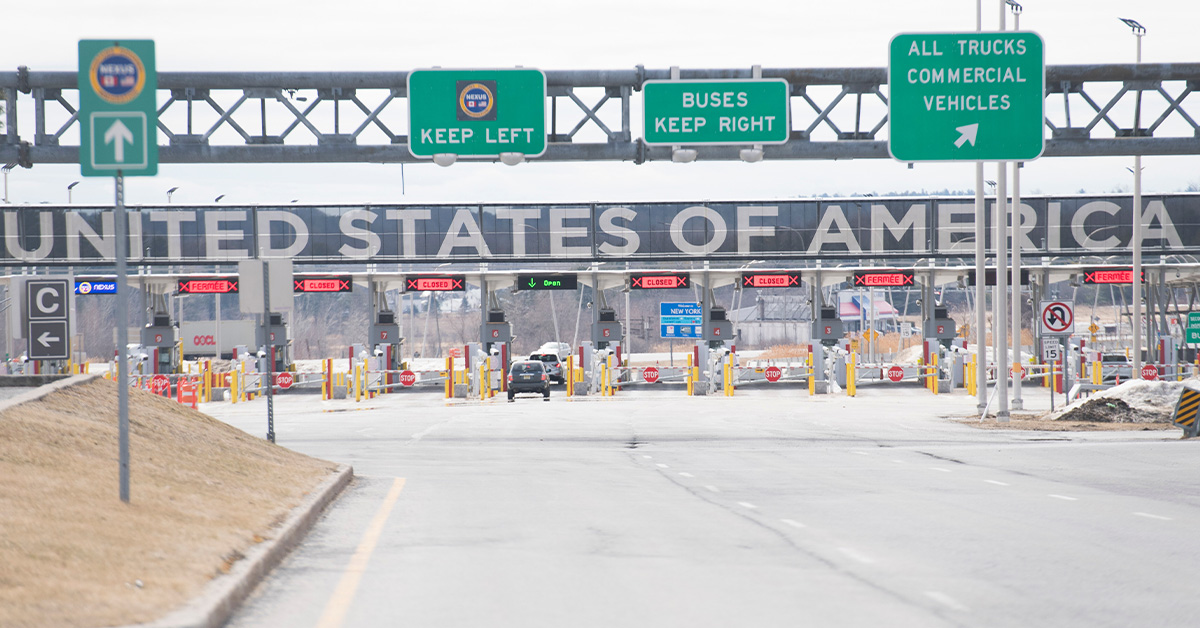Canada and the U.S. have quietly agreed to begin automatically sharing the details of every permanent resident crossing the border in a move that raises serious privacy concerns.
A deal signed in July 2024 that came into effect this month updated a 2012 agreement to allow biographic and biometric details such as personal information, photos, fingerprints and immigration histories to be shared on the millions of permanent residents of both countries who cross the border every day.
Previously, the agreement did not include either permanent residents or citizens.
On This Page, You Will Find:
- An overview of the recent Canada-U.S. agreement to share permanent residents’ data.
- Details on the updated agreement, its history, and privacy implications.
- Insights into the role of biographic and biometric data sharing.
- Comments from Canadian officials and public reactions.
- Donald Trump’s recent statements on tariffs and annexation of Canada.
Immigration Minister Marc Miller revealed the change in a press conference on Wednesday, but did not say why it had taken so long for the government to mention it. After the agreement in July 2024, the legislation went through parliament in October.
Miller said the deal would be of “mutual interest” given a potential wrangle with incoming president Donald Trump over border security. But the deal was signed with officials from the administration of President Jo Biden.
In a statement to the National Post, Immigration, Refugees and Citizenship Canada (IRCC) spokesperson Jeffrey MacDonald said that information sharing between the U.S. and Canada “strengthens visitor screening and supports managed migration”.
“The Government of Canada will be authorized to use biographic or biometric information of U.S. permanent residents (PR) making an immigration application to Canada to query and obtain information concerning their immigration history with the U.S,” MacDonald wrote.
“Likewise, the U.S. will be authorized to use biographic or biometric information of Canadian PRs making an immigration application to the U.S. to query and obtain information concerning their immigration history with Canada.”
Trump statements on Canada
In recent weeks, Trump has made several statements concerning Canada that have garnered significant attention and prompted varied reactions from Canadian leaders and the public.
Proposed Tariffs on Canadian Imports
Trump has announced plans to impose a 25% tariff on all Canadian imports, citing concerns over subsidies and defense contributions. He argues that Canada benefits from approximately $200 billion in subsidies and relies heavily on U.S. military protection.
Suggestion of Canadian Annexation
Beyond economic measures, Trump has suggested that Canada could become the 51st state of the United States. He posits that such a merger would eliminate the need for tariffs, reduce taxes, and enhance security for Canadians. Trump has stated he would use “economic force” rather than military means to pursue this idea.
Canadian Responses
Canadian leaders have responded firmly to Trump’s proposals. Outgoing Prime Minister Justin Trudeau dismissed the annexation suggestion, stating there is “not a snowball’s chance in hell” that Canada would join the U.S.
Energy Minister Jonathan Wilkinson warned that U.S. consumers would face economic repercussions from the proposed tariffs, including increased costs for essential goods.
Public Opinion
These developments have sparked discussions among Canadians and Americans alike. Polls indicate that a significant majority of Canadians oppose the idea of becoming a U.S. state, reflecting strong national identity and sovereignty sentiments.
In summary, President-elect Trump’s recent comments about Canada, encompassing proposed tariffs and suggestions of annexation, have elicited strong reactions from Canadian officials and the public, highlighting the complexities of U.S.-Canada relations.
FAQ
What is the Canada-U.S. agreement on data sharing for permanent residents?
The updated agreement allows Canada and the U.S. to share personal and biometric data of permanent residents crossing the border. It includes details like photos, fingerprints, and immigration histories to enhance visitor screening and manage migration. Previously, permanent residents were excluded, but the changes now affect millions on both sides.
Why was the agreement updated to include permanent residents?
Canadian officials claim the change strengthens border security and supports managed migration. The update aligns with mutual interests, particularly amid heightened border security concerns following Trump’s presidency. Critics argue it diminishes privacy without adequate transparency or consultation.
How has the public reacted to this agreement?
The update has sparked significant privacy concerns. Immigration lawyers criticized the lack of public disclosure and privacy assessments, while many worry about potential misuse of data. Canadian officials defend the move as necessary for border security and migration management.
What are Donald Trump’s recent statements about Canada?
Donald Trump proposed imposing 25% tariffs on Canadian imports, citing subsidies and defense concerns. He also suggested Canada could become a U.S. state, claiming it would improve security and economic ties. These remarks have been met with strong opposition from Canadian leaders.
How does this agreement impact Canadian permanent residents?
Canadian permanent residents crossing into the U.S. now have their personal and immigration data automatically shared with U.S. authorities. Critics warn this undermines their privacy and raises concerns about how the data might be used or stored without clear oversight.



